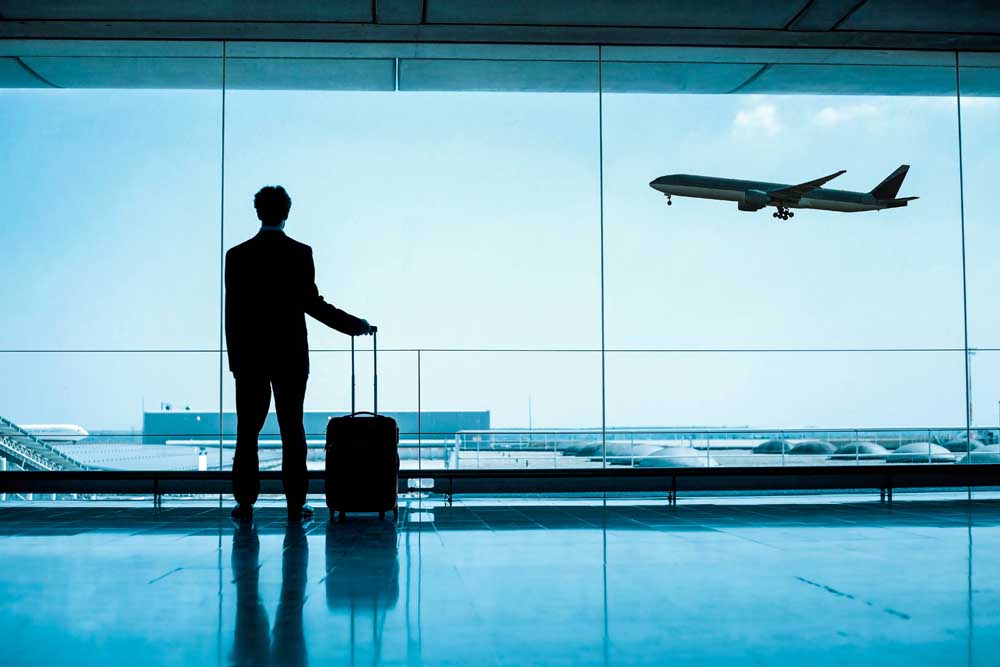Ask the experts: Staying safe while you travel
Published 8:00 am Thursday, March 4, 2021

- N1701P49004H.jpg
As vacation season approaches, the Centers for Disease Control and Prevention has several recommendations when it comes to traveling.
Health care providers urge East Texans who do travel to plan ahead and take every precaution possible, and the CDC also offers guidelines to travel as safely as possible.
Dr. Lija Thomas of Christus Trinity Clinic in Longview said being mindful of what’s happening around you is key when traveling during the pandemic.
“I would say that it would be important to check travel restrictions before you go,” Thomas said.
For at least two weeks before travelling, everyday precautions should be taken and high-risk activities should be avoided.
“Definitely, wherever you are going I would definitely recommend putting a few extra masks in your bag along with some gloves and hand sanitizer,” Thomas said. “If you are free of symptoms and you do have to travel, if you’re going to travel just be mindful of six feet distance, keep a mask on at all times, wash your hands.”
It is important to maintain at least a 6 foot distance from others both indoors and outdoors, according to the CDC. Not sure how far 6 feet is? It can be estimated as about two arm lengths. When in doubt, give yourself more space.
When wearing a face mask, it is important to keep both nose and mouth covered, according to the CDC.
Even with these precautions, there is still a risk. Thomas recommends being mindful of symptoms and being aware of who is around.
“If you do have any symptoms of COVID or if you have been around someone with COVID, please stay home and avoid travel,” she said.
Avoiding large crowds or being around many people also is a good practice during the pandemic.
“I went on a plane in December and my mom and I were very careful,” Thomas said. “We were washing our hands with soap and water as many times as possible.”
The CDC recommends washing hands with soap and water for at least 20 seconds after using the bathroom and after being in a public space. If soap and water are not available, hand sanitizer containing at least 60% alcohol may be used.
“If your hands do get really dry, if you have Eczema or dermatitis, you can stick to soap and water and doing that more,” Thomas said.
Moisturizing hand sanitizers and hand sanitizing lotions are available, she noted.
“They still have 60% alcohol with vitamin E,” Thomas said.
Travel usually includes stopping at gas stations, hotels, restaurants and more.
The CDC recommends using disinfecting wipes on handles and buttons at gas pumps before touching them and using hand sanitizer or washing hands after pumping gas.
Plan ahead with hotels and food stops for social distancing.
According to the CDC, the safest option is to pack or bring your own food on the trip, but if that is not possible, the safest options are using a drive-through, delivery, take-out or curbside pickup.
Some activities present a higher risk of contracting COVID-19. The CDC lists international travel, large social gatherings (such as a wedding, funeral or party), mass gatherings (such as a sporting event, concert or parade), restaurants, bars, movie theaters, public transportation, airports, cruise ships and others as high-risk activities.
Travelling using public transportation can increase the risk of spreading COVID-19 as people will likely be in close contact with others for prolonged periods of time, and social distancing might be difficult. Wearing a face mask, gloves and washing or sanitizing hands is key in those situations.
International travel may be difficult as countries could continue to operate with bans. Some airlines require a negative COVID-19 test prior to flying. While it may be needed for international travel, it is not mandatory to get a test before leaving the state or traveling within the country, Thomas said.
Taking precautions should not stop once travelers return home.
According to the CDC, a person who has traveled can pose a risk to family, friends and the community for 14 days after returning home.
“If possible, work from home when you get back for seven to 10 days even if you’re not symptomatic,” Thomas said. “I would elect to do that just to be safe.”
The CDC recommends that travelers who participated in higher-risk activities during international travel be tested for COVID-19 three to five days after travel. The CDC also recommends that travelers stay home for seven days after returning home. If travelers choose not to be tested, it is recommended that they stay home for 10 days after travel.







